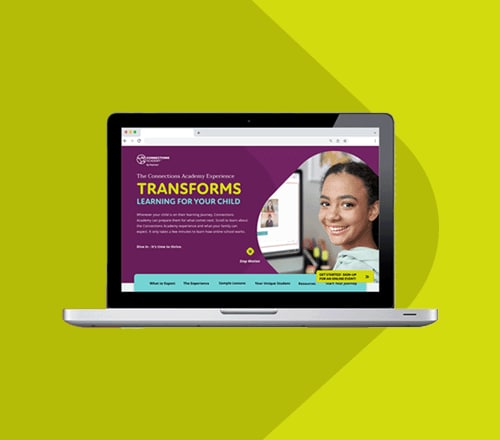Tips for Raising Your Child to Be Bilingual
byJennifer Strimbu
4 min to read
In an increasingly interconnected world, students can benefit from learning to speak more than one language. Bilingual students can gain both personal and professional benefits that help them grow as an individual and compete with other professionals in today’s global world. However, whether you’re raising a child in a bilingual home or a monolingual one, here are some tips to help you more effectively raise a bilingual student.
How Can Bilingual Families Raise a Bilingual Student?
If you’re raising a child in a bilingual home, you may think your child will pick up both languages naturally. They might, but it’s not a given. Learning two languages requires active learning practices, time, and attention. To increase your child’s ability to learn two languages in a bilingual home, it’s important to:
1. Speak Both Languages Often.
You should speak to your child in both languages as much as possible in order to help them become fluent. It’s important for students to grow up hearing the language in everyday dialogue, as research shows that the more words you expose your child to, the faster they’ll learn a language.
2. Choose Reading over TV.
To increase language development when raising bilingual children, reading is the most successful resource to help your child both practice processing words and learn—grammar. TV can also be a great supplemental resource to help your student practice language comprehension and start learning words and accents, but reading to your child and having them read to you can be better for retention.
3. Dedicate Equal Time to Both Languages.
You likely won’t be speaking both languages to your child simultaneously, so how do you make sure they get plenty of exposure to both? One of the most common methods is having one parent always speak one language while the other parent always speaks the second language. Another common method is rotating which language you speak at home from one day to the next.
Hearing both languages equally can allow your student to absorb both languages at a similar pace as well as spend a similar amount of time practicing speaking and listening.
How Can Monolingual Families Raise a Bilingual Student?
When it comes to raising bilingual children in a monolingual home, the key is creating as many opportunities for language exposure as possible. To increase your child’s ability to learn successfully, it’s important to:
1. Learn the Basics of the Second Language.
The best way to help your child is to relate to your child by learning the foundational aspects of the second language yourself. Just simple vocabulary words for items around the house and asking common questions like “How was your day?” or “What are you doing after school?” can help prompt your student to practice.
2. Enlist Help from Family and Friends.
Seek out friends and family or other community events to help expose your child to as many opportunities as possible to practice their second language. Many communities or libraries offer age and skill appropriate language learning resources both in person and online. It may also be beneficial to see if your child’s school offers any language learning or culture clubs. The more people your child has around them to help them practice, the better.
3. Travel to Where the Native Language Is Spoken.
While it can feel daunting to travel to an area of town or a part of the world that speaks a different language than you, doing so can be beneficial when raising bilingual children. There is simply no substitute for hearing a language spoken by native speakers, and you often don’t have to travel far. Look for community events, shops, or restaurants that speak your child’s second language to give them room to experience a new culture while learning their new language.
The Importance of Bilingual Education
Whether you are a bilingual or monolingual family, one of the best tips for raising a bilingual child is to put them in a bilingual education program. Developing foreign language skills opens the door for a deeper understanding of the world and grows students' academic, professional, and personal lives.
In the past, many families didn’t have access to second-language education until their child entered high school. And, even then, the options were often slim. But with the rise of online school, many children can receive second-language education at a much earlier age—and the choices are wider than ever before.
At Connections Academy, our curriculum allows your child to choose courses in Mandarin Chinese, Japanese, German, Latin, French, and Spanish. When children learn a language online, they have an incredible opportunity to immerse themselves in that language, receiving expert guidance from teachers along the way. And, since Connections Academy is a public school, the world-language courses are tuition-free and available to most families across the U.S.
Discover an extensive foreign language curriculum and more about enrolling your K-12 student in a Connections Academy supported school.



